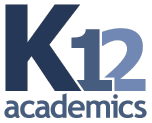In fact, there are many pedagogies that leverage constructivist theory. Most approaches that have grown from constructivism suggest that learning is accomplished best using a hands-on approach. Learners learn by experimentation, and not by being told what will happen. They are left to make their own inferences, discoveries and conclusions. It also emphasizes that learning is not an "all or nothing" process but that students learn the new information that is presented to them by building upon knowledge that they already possess. It is therefore important that teachers constantly assess the knowledge their students have gained to make sure that the students perceptions of the new knowledge are what the teacher had intended. Teachers will find that since the students build upon already existing knowledge, when they are called upon to retrieve the new information, they may make errors. It is known as reconstruction error when we fill in the gaps of our understanding with logical, though incorrect, thoughts. Teachers need to catch and try to correct these errors, though it is inevitable that some reconstruction error will continue to occur because of our innate retrieval limitations.
In most pedagogies based on constructivism, the teacher's role is not only to observe and assess but to also engage with the students while they are completing activities, wondering aloud and posing questions to the students for promotion of reasoning. (ex: I wonder why the water does not spill over the edge of the full cup?) Teachers also intervene when there are conflicts that arise; however, they simply facilitate the students' resolutions and self-regulation, with an emphasis on the conflict being the students' and that they must figure things out for themselves. For example, promotion of literacy is accomplished by integrating the need to read and write throughout individual activities within print-rich classrooms. The teacher, after reading a story, encourages the students to write or draw stories of their own, or by having the students reenact a story that they may know well, both activities encourage the students to conceive themselves as reader and writers.
Specific approaches to education that are based on constructivism include:
Constructionism
An approach to learning developed by Seymour Papert and his colleagues at MIT in Cambridge, Massachusetts. Papert had worked with Piaget at the latter's Institute in Geneva. Papert eventually called his approach "constructionism." It included everything associated with Piaget's constructivism, but went beyond it to assert that constructivist learning happens especially well when people are engaged in constructing a product, something external to themselves such as a sand castle, a machine, a computer program or a book. This approach is greatly facilitated by the ready availability of powerful 'constructing' applications on personal computers. Promoters of the use of computers in education see an increasing need for students to develop skills in Multimedia literacy in order to use these tools in constructivist learning.
Reciprocal Learning
Procedural Facilitation's for Writing
Cognitive Tutors
Cognitively Guided Instruction
A research and teacher professional development program in elementary mathematics created by Thomas P. Carpenter, Elizabeth Fennema, and their colleagues at the University of Wisconsin-Madison. Its major premise is that teachers can use students' informal strategies (i.e., strategies students construct based on their understanding of everyday situations, such as losing marbles or picking flowers) as a primary basis for teaching mathematics in the elementary grades.
Anchored Instruction
Problems and approaches to solutions are embedded in a narrative environment.
Cognitive Apprenticeship
Learning is achieved by integration into a specific implicit and explicit culture of knowledge.
Cognitive Flexibility
Pragmatic Constructivism

